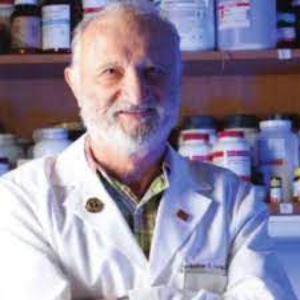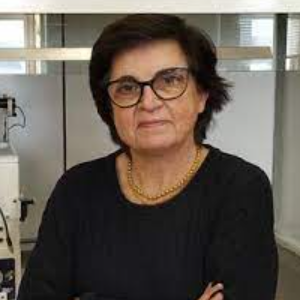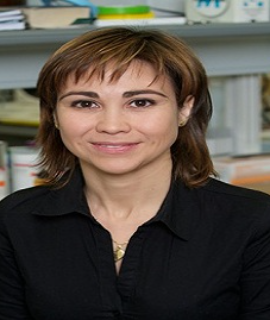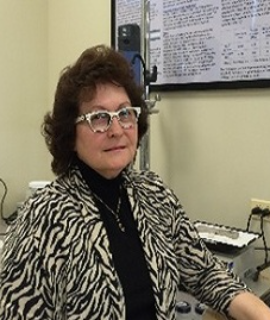Andras G. Lacko, University of North Texas Health Science Center, United States
Although lipoprotein-based drug-delivery was proposed as an outstanding platform for diagnostic and therapeutic applications almost 35 years ago, no lipoprotein based formulations have so far reached the clinical trial stage. Due to small size, long residence time in the circulat [....] » Read More




































Title : Targeted self-navigating multifunctional drug delivery vehicles driven by promiscuous landscape phage proteins
Valery A. Petrenko, Auburn University, United States
Development of precision medicines acting specifically at the site of disease has been a long sought goal for the last century, starting from pioneering works of Paul Ehrlich, who suggested the concept of site-directed chemotherapeutics or ‘magic bullet’. With the dev [....] » Read More
Title : Nucleic acid based amphiphiles as soft materials for nanomedicine
Philippe Barthelemy, University of Bordeaux, France
The combination of nucleic acids chemistry (e.g., nucleoside, nucleotides, oligonucleotides) with supramolecular principles provides an efficient and powerful approach to prepare well-defined systems with tunable physico-chemical properties and functions. We develop new nano-syst [....] » Read More
Title : Patient centric dug delivery systems: ODT (Oral Disintegrating Tablet) and ODF (Oral Disintegrating Film)
Carmen Popescu, Roquette America, United States
Fast disintegration formulations like Oral Disintegrating Tablets (ODT) and Oral Disintegration Films (ODF) were emerging in the last decade due to the fact they offer patient convenience and compliance by fast dissolving or disintegrate in the mouth while in contact with the ava [....] » Read More
Title : Formulation of liposomal doxorubicin modified with Bombesin peptide for selective targeting of GRP receptors over-expressed by cancer cells
Giancarlo Morelli, University of Naples Federico II, Italy
The presentation concerns the obtainment of liposomal doxorubicin in which liposomes are externally modified with a targeting peptide able to drive liposomal doxorubicin in a selective way on membrane receptors over expressed in tumours. We have developed a kit containing a first [....] » Read More
Title : Development of receptor targeted nanocomplexes for delivery of RNA therapeutics to the lung
Stephen Hart, UCL GOS Institute of Child Health, United Kingdom
Cystic Fibrosis (CF) is caused by mutations in the cystic fibrosis transmembrane conductance regulator gene (CFTR), encoding a cyclic AMP-activated chloride channel. CFTR deficiency also regulates the epithelial sodium channel, ENaC, leading to increased sodium and water absorpti [....] » Read More
Title : Drug delivery across the skin barrier using biocompatible thermoresponsive nanogels
Fiorenza Rancan, Charite - Universitatsmedizin Berlin, Germany
Several new therapeutic agents for the treatment of dermatological conditions are emerging. Despite skin accessibility, delivery of drugs across skin and maintenance of a sufficient drug concentration in the target region needs further improvement. Nanocarrier-based approaches ar [....] » Read More
Title : Engineering endosomal escape using pHlexi particles
Georgina Kate Such, The University of Melbourne, Australia
The design of ‘smart’ delivery systems with tunable response to their environment is important for developing new therapies, as they allow efficient and controlled therapeutic release to a specific target site. Self-assembled polymeric carriers have generated signific [....] » Read More
Title : Aptamers as therapeutic agents in human cancers and evidence for glioblastoma targeting through the blood-brain-barrier of aptamer-functionalized nanosystems
Laura Cerchia, Istituto per l’Endocrinologia e l’Oncologia Sperimentale “G. Salvatore” (IEOS), Italy
Highly selective compounds emerging for anti-cancer therapy are oligonucleotide aptamers that interact with their targets by recognizing a specific three-dimensional structure. Thanks to their unique properties (small size, high selectivity and sensitivity, high stability, conven [....] » Read More
Title : Building a better antibody-based medicine: Antibody mimetic
Hanieh Khalili, University of East London, United Kingdom
Therapeutic proteins (e.g. monoclonal antibodies, cytokines, and enzymes) are widely used in healthcare. Monoclonal antibodies (particularly IgGs) are an important class of protein based-medicine which tend to aggregate and misfold. Therefore, development of stable IgGs remains o [....] » Read More
Title : Oral delivery of lipophilic drugs: The solubility-permeability interplay and formulation design
Arik Dahan, Ben-Gurion University of the Negev, Israel
Poor aqueous solubility is a major challenge in today’s biopharmaceutics. While solubility-enabling formulations can significantly increase the apparent solubility of the drug, the concomitant effect on the drug’s apparent permeability has been largely overlooked. The [....] » Read More
Title : Inhalable therapy of pulmonary Tuberculosis mediated by polysaccharide microparticles
Ana Margarida Grenha, University of Algarve, Portugal
Tuberculosis remains a leading cause of death, although effective therapy is available for many years. Therapeutic failure is mainly due to non-compliance with prolonged treatments, often associated with severe side-effects. New therapeutic strategies are therefore demanded. As t [....] » Read More
Title : Macrophage-stabilized drug crystals
Gus R. Rosania, University of Michigan College of Pharmacy, United States
Poorly soluble drugs with slow rates of clearance are poised to precipitate in the organism following long term oral administration. In this context, my research group has been characterizing the intracellular crystal-like drug inclusions (CLDIs) that are formed by clofazimine, a [....] » Read More
Title : Engineered spatiotemporal delivery of morphogens for skeletal regeneration
Esmaiel Jabbari, University of South Carolina, United States
Osteogenesis and vascularization during bone development are coupled by spatiotemporal regulation of paracrine signaling in which the invading vascular endothelial cells secrete osteogenic morphogens to stimulate cell differentiation and bone formation. Conversely, the differenti [....] » Read More
Title : Transfection by cell-penetrating peptides
Ulo Langel, Stockholm University, Sweden
Recent data on mechanisms and applications of transfection strategies by cell penetrating peptides (CPP) are summarized on the variety of different oligonucleotide cargoes including plasmid, antisense and siRNA oligonucleotides. Introduction of PepFect and NickFect technologies f [....] » Read More
Title : Bioinspired Sequence-defined drug, protein and gene carriers by chemical evolution
Ernst Wagner, Ludwig-Maximilians-Universitat Munich, Germany
Viruses and protein toxins present natural examples for potent intracellular delivery of nucleic acids or proteins. Natural evolution has optimized such carriers that comprise multiple different functions for overcoming the delivery barriers. The evolution process takes advantage [....] » Read More
Title : Challenge and progress in delivering molecules to the brain
Teruna J. Siahaan, University of Kansas, United States
One of the major challenges in studying brain function and diseases (i.e., Alzheimer’s, Parkinson’s, multiple sclerosis (MS), and brain tumors) lies in the difficulty in delivering molecules to the brain. The critical obstacle in vivo is the presence of the blood-brai [....] » Read More